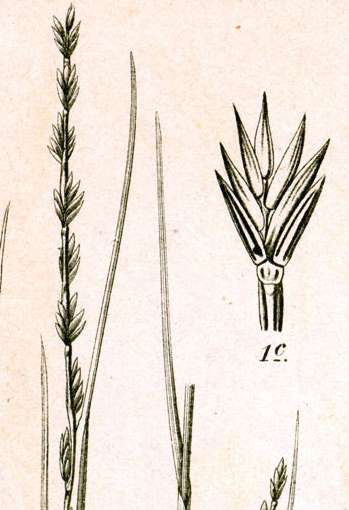The flower, floret, and spikelet
The flower
An individual flower of the Poaceae has no obvious perianth. The flowers usually consist of one pistil with two plumose stigmas and three stamens. Small scales, called lodicules, at the base of the flower are thought to be reduced remnants of the perianth.

The floret
Flowers of grass are sandwiched between two scale-like bracts: the lemma and the palea. The palea is on the adaxial side of the flower. The lemma is on the abaxial side of the flower. The lemma is usually larger than the palea, and it tends to wrap around both the flower and the palea. The entire unit (flower, palea, and lemma) is called a floret.

The spikelet
Florets are arranged in "spikelets". A spikelet is the end of a shoot with:
- one to several florets
- two glumes that subtend this terminal group of florets
A glume is just a sterile bract (i.e., it does not enclose a flower) at the base of a spikelet.

Identification of grasses is often based on whether lemmas or glumes have awns, whether they have teeth, the length of the awns and teeth, the size and shape of the glumes and lemmas, etc.
The cross-sectional shape of the spikelet may also be important. Spikelets may be somewhat cylindrical in cross-section. Alternatively, they may be dorsally compressed or laterally compressed. In laterally compressed spikelets, the glumes are are on the edges of the flattened spikelet:

A dorsally compressed spikelet is flattened the other direction: the glumes are on the flat faces of the spikelet.
You may also have to know how the spikelet falls apart at maturity? In some species, the entire spikelet falls off the plant as a unit ("spikelets breaking below the glumes"). In others, the florets fall out of the spikelet individually, leaving the glumes on the plant ("spikelets breaking apart above the glumes").
Spikelets are arranged on the plant in different ways in different species. This is shown on the next page.
Check your understanding:
Look again at the florets below:
